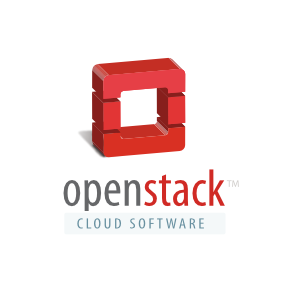Currently, cloud computing are one of the most important and most actively developed branches of the IT industry. This is not surprising, because the formation of clouds revolutionized the approach to the way of data storage, changed the business model, in which information products are offered and contributed to the reduction of costs related to the maintenance of IT infrastructure.

The increasing number of investments in the field of “cloud computing” and the engagement of the biggest companies in the IT industry demonstrate its potential. Statistical data clearly present that in the next few years, the share of this segment in the new sector connected with new technology products will be systematically expanded.
Own cloud in the enterprise
Until recently, cloud computing and related software were managed by the biggest companies from the IT industry. Institutions, which wanted to offer their customers services such as IaaS (and similar), were doomed to create their own solutions. This generated very high cost, and the development of such a product was not always balanced by the expected profit. Most often, the only economically justified alternative was a lease of the virtual infrastructure. Today, however, the situation has been fundamentally changed. The appropriate software has already been developed. This software enables to implement the own cloud computing and share the virtual infrastructure for the customer even by small and medium-sizes companies. Necessary tools are available in the open-source model. It remains only the question of their integration and implementation on the basis of an expected profile of offered services.
OpenStack
There are several open and free solutions, which enable the implementation of the model of public, private and mixed cloud, but the most important is OpenStack. This project was initiated by NASA and Rackspace in 2010. Since then, it is gaining rapidly in popularity. The OpenStack is popular among institutions like Canonical, Cisco, Dell, Hewlett-Packard and IBM.

OpenStack essentially consists of a number of separate projects, each of which is a component (mostly optional) for possible inclusion in a cloud deployment (e.g. hypervisor modules, block and object storage, network management, etc.). Open Stack's components are designed to run on the inexpensive commodity hardware – in most cases in a distributed model. This means that a properly implemented cloud can be deployed even on a small scale, with an affordable infrastructure. Then, if there will be a business need, this cloud can be expanded on an ongoing basis without the need for one-time investment in efficient, but expensive equipment. It should also be noted that OpenStack is compatible with the Amazon Web Services (AWS) on the API level, making it easy to transfer applications running in this cloud.
Integration
Presented above features clearly underline that OpenStack is an attractive platform, on which it is worth to base own cloud products. On the other hand, it does not have only advantages. First of all, this is a complex solution and in any case, it does not constitute a monolithic product. It is rather a set of loosely connected components, from which you can build your own architecture (corresponding to your requirements).
The implementation of a well-functioning solution is connected with, among others, the proper design of control nodes, the use of optimal redundancy model, selection of adequate database backends, the data replication method, types of block and object storage, etc. The big challenge is to create a system, which will guarantee appropriately high availability, high scalability and the possibility of the quick adaptation to current business needs. Incredibly rapid development of OpenStack causes that an important issue is the separation of human resources for permanent tracking of changes in its separate elements, because the possibility of quick mastering new functionality and making them available for customers is translated into a real competitive advantage. A separate issue is the fact that there is often a need to establish an active cooperation with development community in terms of troubleshooting and code optimization.
OpenStack and related applications
The forCore team, knowing described here conditions from the practice and thanks to the extensive experience in realization of projects based on the open-source software, offers you widely understood services related to OpenStack based cloud deployment. In particular:
- design of cloud computing architecture,
- deployment of products based on OpenStack components,
- maintenance of the cloud computing system and technical support,
- integration of open source applications with OpenStack,
- technical consultancy in the range of configuration and use of the software.
forCloud
We also invite you to familiarize yourself with the forCloud product, which is a ready cloud solution, based on OpenStack. It has been built on the basis of proven components and thoroughly tested. Advantages of this product include a great flexibility in configuration and very good technical support with the ability to maintain the deployed solution by the forCore team. It is an ideal tool for institutions, which want to expand their offer of advanced IaaS services at low costs with the optimal model of maintenance.
We believe that together with the spread of free and open source software, the cloud computing will move into a new era, in which sharing services of the virtual infrastructure and applications in clouds will not be the exclusive domain of the biggest institutions.
We assure you that on the basis of forCore team's experience, you can use the outlined possibilities today.



